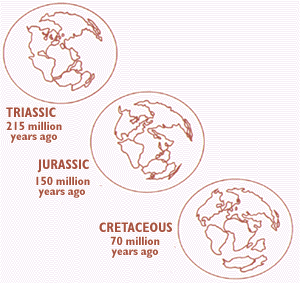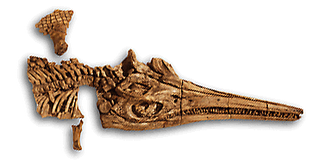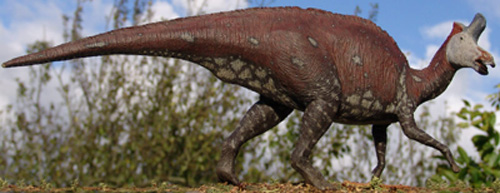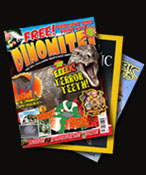Rareresource
Sunday, November 30, 2008
Fossil Animals Are Dinosaurs?
For More News: URL:https://pubs.usgs.gov/gip/dinosaurs/all.html
Thursday, November 27, 2008
More about dinosaurs
Your local museums, public libraries, and bookstores are good places to start. Some national monuments (Dinosaur National Monument, UT and CO), national parks (Petrified Forest National Park, AZ), and state parks (for example, Dinosaur Valley State Park, TX) have outstanding displays. State geological surveys also have or can provide information on nearby dinosaur exhibits. The references below will help you get started; they provided some of the information for this pamphlet.
Dodson, P., and Dawson, S.D., 1991, Making the fossil record of dinosaurs: Modern Geology, vol. 16, p. 3-15. Farlow, J.O., 1993, The dinosaurs of Dinosaur Valley State Park -- Somervell County, Texas: Texas Parks and Wildlife Department, Austin, 31 p. Glut, D.F., 1982, The New Dinosaur Dictionary: Secaucus. Citadel Press, 288 p. Lambert, D., and the Diagram Group, 1990, Dinosaur Data Book: New York, Avon Books, 320 p. Marsh, O.C., 1896, The dinosaurs of North America: U.S. Geological Survey, Sixteenth Annual Report, part I, p. 131-414. Norman, D., 1985, Illustrated Encyclopedia of Dinosaurs: New York, Crescent Books, 208 p. Russell, D.A., 1989, An Odyssey in Time, the Dinosaurs of North America: Minocqua, North Word Press, 220 p. Thulborn, T., 1990, Dinosaus Tracks: London, Chapman and Hall, 410 p. Weishampel, D.B., Dodson, P., and Osmolska, H., 1990, The Dinosauria: Berkeley, University of California Press, 733 p.For More News: URL:https://pubs.usgs.gov/gip/dinosaurs/moreinfo.html
Wednesday, November 26, 2008
Food of Dinosaurs
For More News: URL:https://pubs.usgs.gov/gip/dinosaurs/food.html
Dinosaurs Colors
Direct fossil evidence for dinosaur skin color is unknown. Paleontologists think that some dinosaurs likely had protective coloration, such as pale undersides to reduce shadows, irregular color patterns ("camouflage") to make them less visible in vegetation, and so on. Those dinosaurs that had enough armor, such as the stegosaurs and ceratopsians, may not have needed protective coloration but may have been brightly colored as a warning to predators or as a display for finding a mate. Most dinosaurs probably were as brightly colored as modern lizards, snakes, or birds.
For more news: https://pubs.usgs.gov/gip/dinosaurs/color.html
Origin of avian genome size and structure in non-avian dinosaurs.
Our results indicate that the small genomes typically associated with avian flight evolved in the saurischian dinosaur lineage between 230 and 250 million years ago, long before this lineage gave rise to the first birds. By comparison, ornithischian dinosaurs are inferred to have had much larger genomes, which were probably typical for ancestral Dinosauria. Using comparative genomic data, we estimate that genome-wide interspersed mobile elements, a class of repetitive DNA, comprised 5-12% of the total genome size in the saurischian dinosaur lineage, but was 7-19% of total genome size in ornithischian dinosaurs, suggesting that repetitive elements became less active in the saurischian lineage. These genomic characteristics should be added to the list of attributes previously considered avian but now thought to have arisen in non-avian dinosaurs, such as feathers, pulmonary innovations, and parental care and nesting.
For more info: ncbi.nlm.nih.gov/pubmed/17344851
Thursday, November 13, 2008
dinosaurs live

Wednesday, November 5, 2008
The colour and skin of dinosaurs
Tuesday, November 4, 2008
Platypterygius

Platypterygius was a large ichthyosaur (not a dinosaur) which grew to 6 or 7 metres long. It inhabited the inland sea between 110 and 100 million years ago. Fossils of this animal are amongst the most common of the large marine reptiles found in Queensland. Platypterygius was a fast and agile swimmer. It swam by moving its tail from side to side and steered with paddles or fins. It gave birth to live young. It would have eaten squid, fish and ammonites. The fossil remains of a hatching and its mother were discovered in Queensland in 1988. The name Platypterygius means broad-fin.



